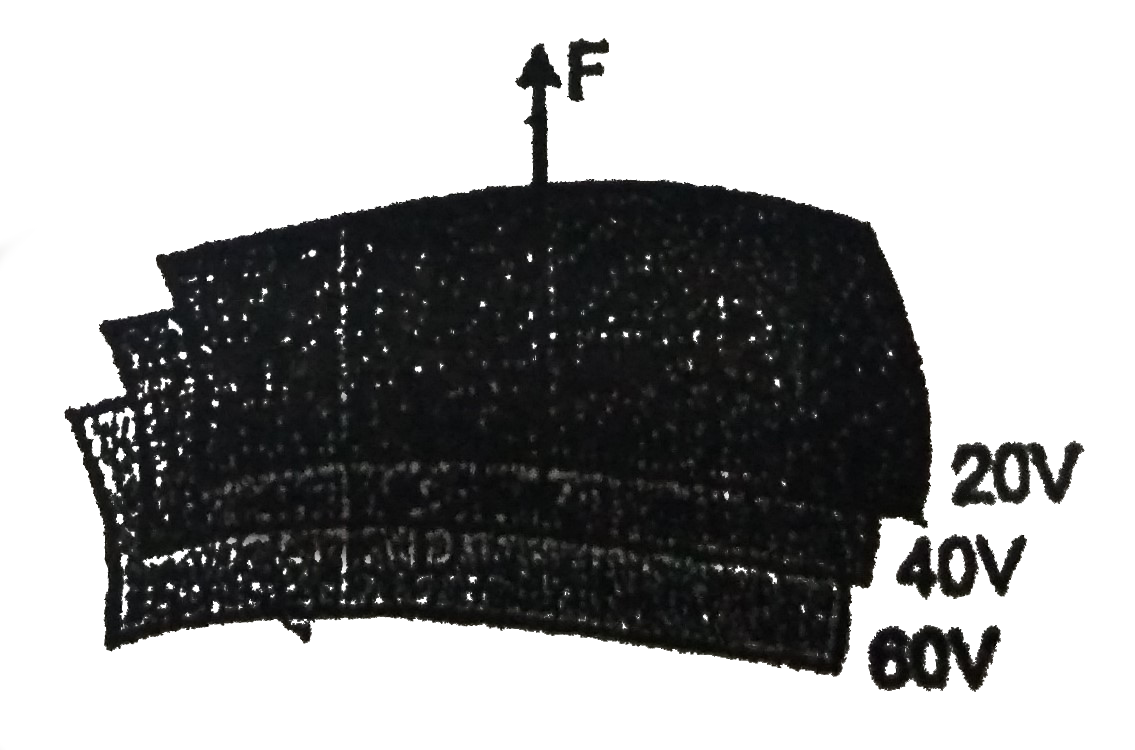Assertion(A): Electric field is always normal to equipotential surfaces and along the direction of decreasing order of potential
Reason(R): Negative gradient of electric potential is electric field.
To solve the question regarding the assertion and reason provided, we will analyze each statement step by step.
Step 1: Understanding the Assertion
Assertion (A): Electric field is always normal to equipotential surfaces and along the direction of decreasing order of potential.
- Equipotential surfaces are surfaces where the electric potential is constant. This means that no work is done when moving a charge along the surface.
- The electric field (E) is defined as the force per unit charge experienced by a positive test charge. It points in the direction of the force that a positive charge would experience.
- The electric field is always perpendicular (normal) to equipotential surfaces because if it were not, work would be done on a charge moving along the surface, which contradicts the definition of equipotential surfaces.
Conclusion for Assertion: The assertion is true.
Step 2: Understanding the Reason
Reason (R): Negative gradient of electric potential is electric field.
- The electric field can be mathematically expressed as the negative gradient of the electric potential (V). This is given by the equation:
E=−∇V
- The gradient of a scalar field (like electric potential) points in the direction of the greatest rate of increase of that field. The negative sign indicates that the electric field points in the direction of decreasing potential.
Conclusion for Reason: The reason is also true.
Step 3: Relationship Between Assertion and Reason
- The reason provides a correct explanation for the assertion. The fact that the electric field is the negative gradient of the potential directly leads to the conclusion that the electric field is normal to equipotential surfaces and points in the direction of decreasing potential.
Final Conclusion
Both the assertion and reason are true, and the reason correctly explains the assertion.
Assertion (A): Electric field is always normal to equipotential surfaces and along the direction of decreasing order of potential.
- The electric field (E) is defined as the force per unit charge experienced by a positive test charge. It points in the direction of the force that a positive charge would experience.
- The electric field is always perpendicular (normal) to equipotential surfaces because if it were not, work would be done on a charge moving along the surface, which contradicts the definition of equipotential surfaces.
Reason (R): Negative gradient of electric potential is electric field.
E=−∇V
- The gradient of a scalar field (like electric potential) points in the direction of the greatest rate of increase of that field. The negative sign indicates that the electric field points in the direction of decreasing potential.
- The reason provides a correct explanation for the assertion. The fact that the electric field is the negative gradient of the potential directly leads to the conclusion that the electric field is normal to equipotential surfaces and points in the direction of decreasing potential.
Both the assertion and reason are true, and the reason correctly explains the assertion.
Topper's Solved these Questions
- SAMPLE QUESTION PAPER (THEORY)BOOK - CBSE MODEL PAPERCHAPTER - SAMPLE QUESTION PAPER (THEORY)EXERCISE - Section – B
10 Videos
- SAMPLE QUESTION PAPER (THEORY)BOOK - CBSE MODEL PAPERCHAPTER - SAMPLE QUESTION PAPER (THEORY)EXERCISE - Section – C
12 Videos
- SAMPLE PAPER 2023 TERM IBOOK - CBSE MODEL PAPERCHAPTER - SAMPLE PAPER 2023 TERM IEXERCISE - SECTION D
4 Videos
Similar Questions
Knowledge Check
Given below are two statements labelled as Assertion (A) and Reason (R):
Select the most appropriate answer from the options given below.
Assertion (A): Electric field is always normal to equipotential surfaces and along the direction of decreasing order of potential
Reason (R): Negative gradient of alectric potential is electric field.ABoth (A) and (R) are true and (R) is the correct explanation of (A).BBoth (A) and (R) are true but (R) is not the cor rect explanation of (A).C(A) is true but (R) is false.D(A) is false and (R) is also false.For an electric dipole potential & electric field
Acan have same magnitude for a point at a distance less than 2 meterBcan have same magnitude fo a point at distacnes greater than 2 meterCcan never be equalDcan never be predictedThe neagative gradient of potential at any point in electric field is
Aelectric intensityBelectric fluxCelectric dipole momentDnone of these
Draw an equipotential surface for a uniform electric field.
View SolutionThe electric field lines coming out of an equipotential surface are
View SolutionA family of equipotential surface are shown. The direction of the electric field at point A is along-

View SolutionWhat is not true for equipotential surface for uniform electric field ?
View SolutionWhat is not true for equipotential surface for uniform electric field ?
View Solution
